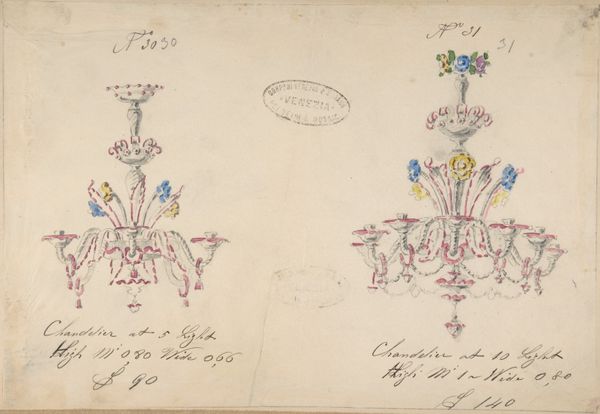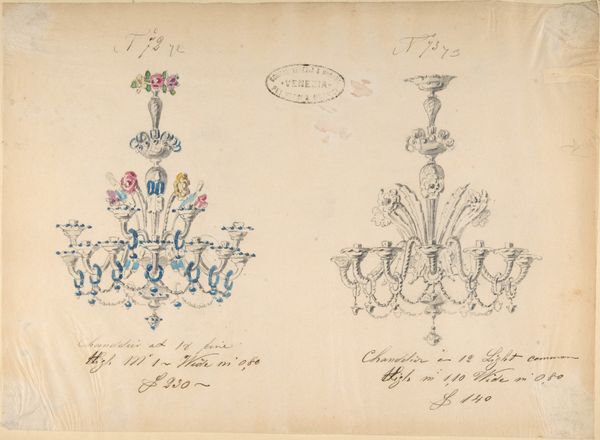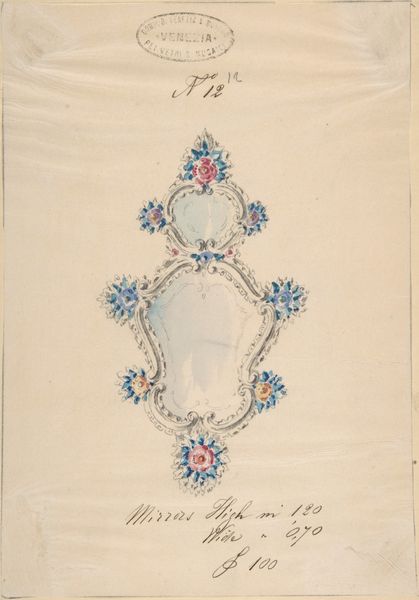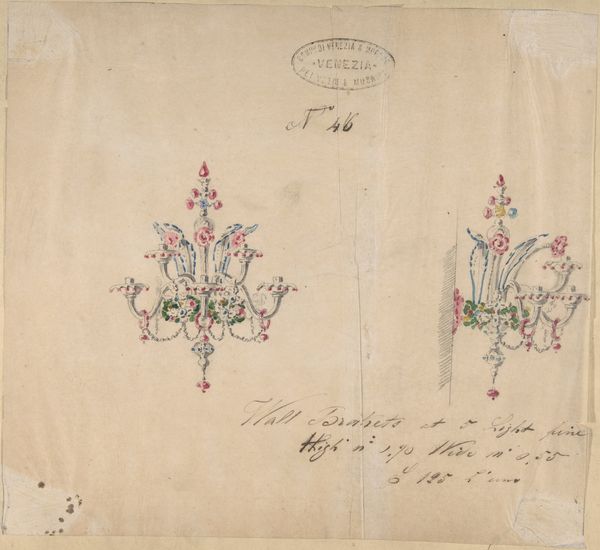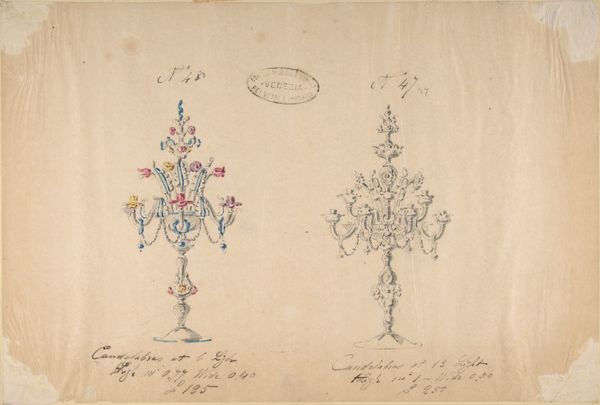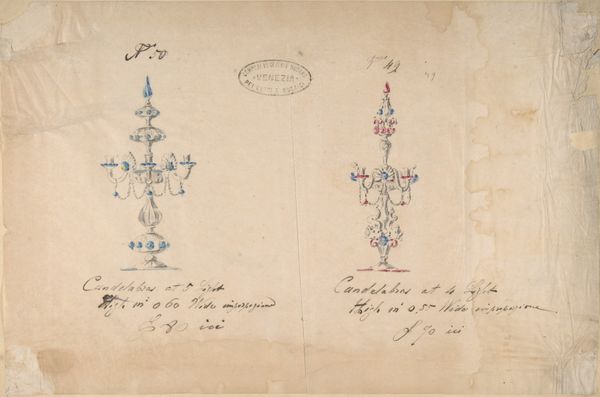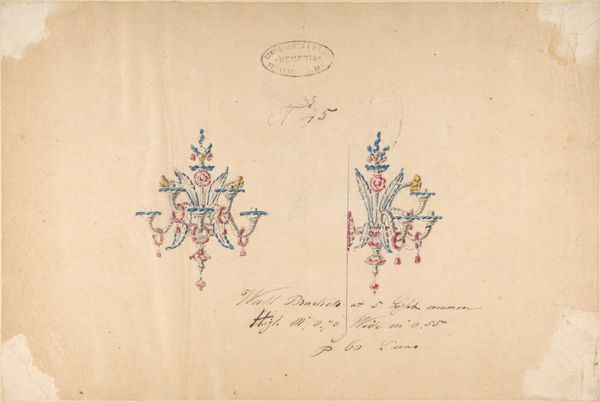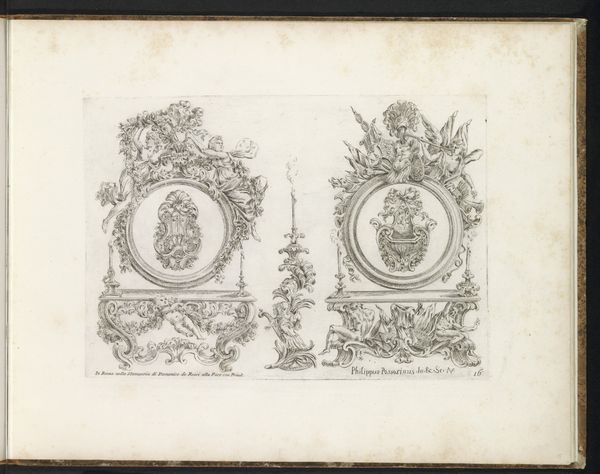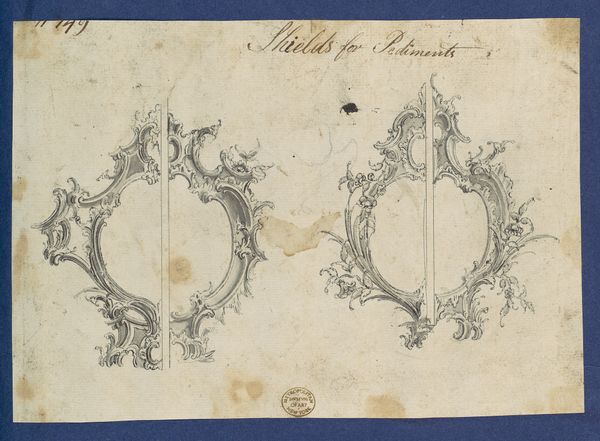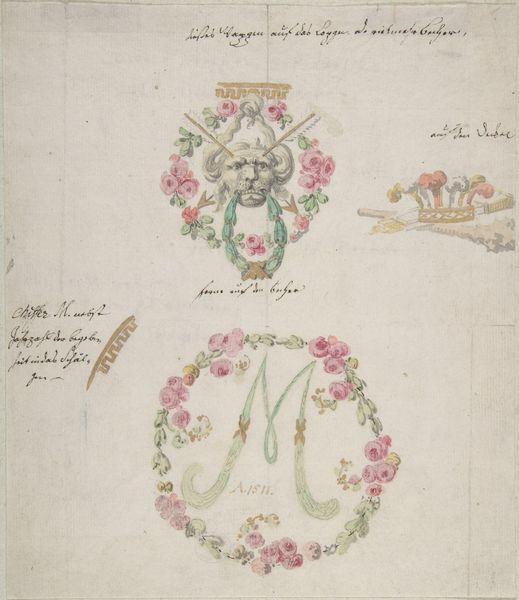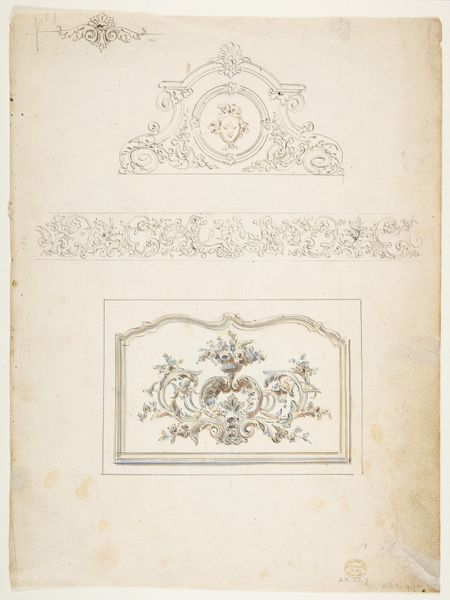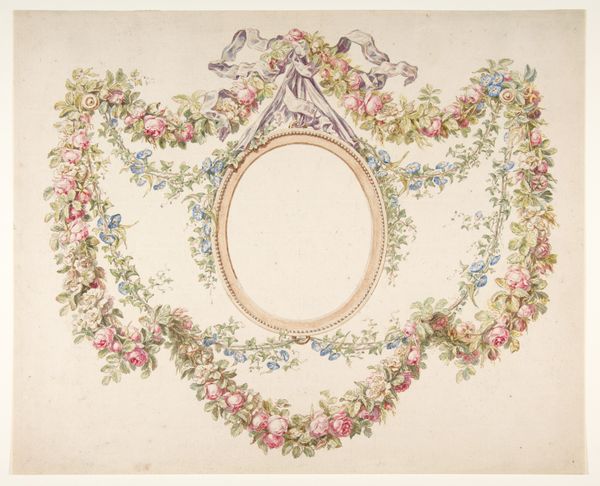
One of Twenty-Three Sheets of Drawings of Glassware (Mirrors, Chandeliers, Goblets, etc.) 1850 - 1880
0:00
0:00
drawing, print, paper, watercolor
#
drawing
# print
#
paper
#
watercolor
#
decorative-art
Dimensions: 14 x 19 in. (35.6 x 48.3 cm)
Copyright: Public Domain
Curator: At first glance, they possess an almost rococo sweetness with all of their floral embellishments, don’t they? A charming delicacy that’s difficult to ignore. Editor: This sheet, housed at the Metropolitan Museum of Art, actually features two distinct designs for glassware – specifically mirrors – rendered with watercolor, drawing, and print on paper by Compagnia di Venezia e Murano, circa 1850 to 1880. Curator: Yes, the line work is impeccable! Notice how each curve and flourish contributes to the overall elegance of the compositions, even though these are but mere conceptual sketches. Editor: Precisely! These designs reflect the trend during that time period in Venice where glass production became more integrated with decorative arts. You can even note the notations that include height, width, and prices below each sketched piece. Curator: I am immediately drawn to the symmetry – or lack thereof. One design features angular contours, while the other embraces oval forms. It’s a study in contrast, if you will, between geometric precision and organic fluidity. Editor: They really epitomize how Venetian glassmakers strategically revived and reinterpreted older styles. They tapped into a romantic vision of their own artistic history. This in turn attracted international collectors and sustained a booming tourist industry in the city. Curator: Looking closer, the rendering of depth in the mirrors themselves, suggests the glassmaker’s expert manipulation of light and reflection—essential qualities. Do you think these particular shapes were actually ever manufactured? Editor: It's very probable they did produce either or both, though determining their precise reception and influence is difficult to document at this distance in time. We mostly see their impact on Venice through these very decorative documents that have stood the test of time. Curator: Looking at it, one appreciates how line, form, and balance create not just objects, but visions of idealized domesticity. I see glimpses into the homes they could inhabit. Editor: For me, these are glimpses into Venice's savvy marketing of its unique cultural brand to Europe and the rest of the world during its renaissance era. It certainly helped revitalize a very rich, but nearly forgotten art tradition.
Comments
No comments
Be the first to comment and join the conversation on the ultimate creative platform.

